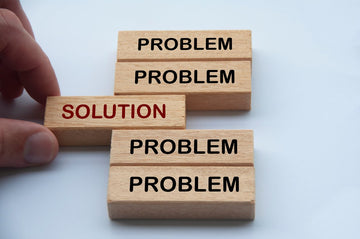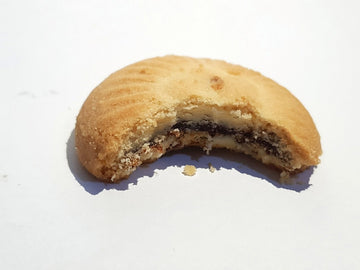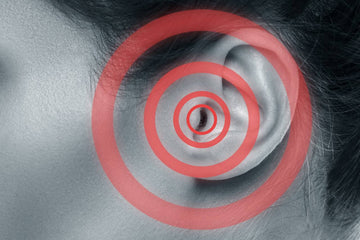8 Most Common Hearing Aids Problems and How to Fix Them
by Hear Clear on Jul 25, 2024

Hearing aids are fantastic little devices that can dramatically improve our quality of life - but like any piece of technology, they're not without their quirks. If you've ever found yourself frustrated with your hearing aids, you're not alone. Understanding common problems and knowing how to fix them can make your hearing aid experience so much smoother, so let's take a look at some of the most frequent issues and their solutions.
Battery Issues
One of the most common frustrations with hearing aids is battery-related problems. After all, these tiny powerhouses are what keep our hearing aids running.
Battery Drainage
Have you ever noticed your hearing aid batteries dying faster than usual? This can be incredibly annoying, especially if it happens at inconvenient times. Often, this issue is due to leaving your hearing aids on when you're not using them. Make it a habit to open the battery door when you take your hearing aids out. This not only turns them off but also allows any moisture to evaporate, which can extend battery life.
Battery Replacement
Replacing batteries can be tricky, especially if you're new to hearing aids or dealing with dexterity issues. If you're struggling, consider switching to rechargeable hearing aids. These eliminate the need for frequent battery changes and can be more cost-effective in the long run.
Sound Quality Problems
Sound quality issues can significantly impact your hearing aid experience. Let's look at two common problems:
Whistling or Feedback
If you're experiencing whistling or feedback from your hearing aids, you're not alone. This is a common issue that can have several causes. It might be due to earwax buildup, ill-fitting earpieces, or holding your hand too close to your ear when inserting the aid. For more detailed information on this issue, check out our article on hearing aid whistling issues.
Muffled or Distorted Sound
Muffled or distorted sound can be frustrating and defeat the purpose of wearing hearing aids. Often, this is due to a buildup of earwax or moisture in the hearing aid. Regular cleaning can help prevent this issue. If the problem persists, it might be time for a professional cleaning or adjustment.
Comfort and Fit Issues

Comfort is key when it comes to hearing aids. After all, you're wearing these devices for most of your waking hours.
Discomfort or Irritation
If your hearing aids are causing discomfort or irritation, it could be due to an ill-fitting earpiece or an allergic reaction to the material. Don't suffer in silence - speak to your audiologist about getting a better fit or exploring hypoallergenic options.
Proper Fit
A proper fit is crucial for both comfort and optimal performance. If your hearing aids feel loose or you're not getting the sound quality you expect, it might be time for a re-fitting. Remember, our ears change over time, so what fit perfectly a year ago might need adjustments now.
Maintenance and Care
Proper maintenance can prevent many common hearing aid problems. Here are two key areas to focus on:
Cleaning Routine
Establish a daily cleaning routine for your hearing aids. Use a soft, dry cloth to wipe them down and remove any visible debris. For a more thorough clean, use the tools provided with your hearing aids, like a wax pick or brush.
Moisture Protection
Moisture is the enemy of hearing aids. Always remove your hearing aids before showering, swimming, or any water-based activities. If you live in a humid climate, consider using a dehumidifier designed for hearing aids to keep them dry overnight.
Connectivity Problems
In our increasingly connected world, many hearing aids now offer Bluetooth connectivity. While this feature can be incredibly useful, it can also bring its own set of challenges.
Bluetooth Connectivity
If you're having trouble connecting your hearing aids to your phone or other devices, first make sure your hearing aids are fully charged and within range of the device you're trying to connect to. If problems persist, you might need to reset the connection or consult your user manual for specific troubleshooting steps.
Phone or Device Compatibility
Not all hearing aids are compatible with all phones or devices. If you're in the market for new hearing aids and connectivity is important to you, make sure to check compatibility before making a purchase; our top-quality hearing aids in the UK offer a range of connectivity options to suit different needs.
Technical Malfunctions
Sometimes, hearing aid problems go beyond simple fixes and require professional attention.
Software Glitches
If your hearing aids have suddenly started behaving oddly, it might be due to a software glitch. Try turning them off and on again (yes, the classic IT solution works for hearing aids too!). If the problem persists, you might need to have the software updated or reset by a professional.
Hardware Issues
Physical damage or wear and tear can lead to hardware issues. If you notice any cracks, loose parts, or other physical damage, it's best to have your hearing aids professionally assessed and repaired if necessary.
Final Thoughts
While hearing aid problems can be frustrating, most issues have simple solutions. Regular maintenance, proper care, and knowing when to seek professional help can keep your hearing aids functioning optimally for years to come. Remember, your hearing health is an important part of your overall wellbeing - so don't let hearing aid issues discourage you from using these life-changing devices.




